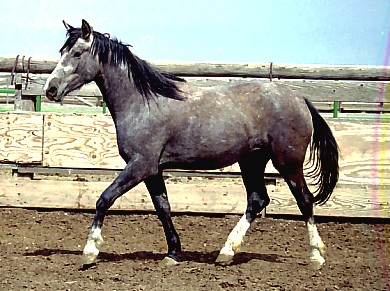The Wild Free-Roaming Horse and Burro Act of 1971 (the Act) calls for the protection and management of wild horses and burros to assure a thriving, natural ecological balance and multiple-use relationship on the range. The BLM estimates only 17,000 wild horses and 8,000 burros remained in 10 western states when the Act passed in 1971.
The Act limits wild horses and burros to areas of the public lands where they were found in 1971. These areas are called Herd Areas (HAs) and comprise approximately 51 million acres of public, private and other land ownership.
By 1976, wild horse and burro populations had grown to an estimated 49,000 animals. Congress amended the Act to authorize the BLM to use helicopters in the removal of excess animals. The BLM also initiated a national Adopt-A-Horse (or Burro) Program to encourage animal enthusiasts to adopt animals — but there was still no provision to pass “title” of the animal to the adopter. Only a few were willing to adopt the animals without eventually becoming their legal owner.
The 1976 amendment also required the BLM to complete land use plans and to manage wild horses and burros as one of the many uses of the public lands under the principles of multiple use and sustained yield.
By 1978, populations on the range had grown to nearly 54,000 animals. Congress amended the Act a second time — to define “excess” wild horses and burros, and require their immediate removal. The BLM was also given authority to transfer title of adopted animals to the adopter after a one year period.
In the late 1970’s, the BLM began to prepare land use plans as directed by the Congress. Through land use planning, the BLM evaluated each herd area to determine if the goal of managing healthy wild horses and burros on healthy rangelands over the long-term could be met.
Today, the BLM manages horses and burros in 180 subsets of the original herd areas — Herd Management Areas — that comprise about 32 million acres of public, private and other landownership.
The BLM also determined the appropriate management level (AML) of wild horses and burros within each HMA. The AML is the maximum number of wild horses and burros which avoids a deterioration of the range and results in a thriving ecological balance.
To establish the AML, teams of BLM interdisciplinary resource specialists completed in-depth evaluations of resource monitoring and population inventory data collected over several years. The results of the BLM’s analyses were then documented and decisions issued. AML is set in consideration of the land’s ability to sustain and produce forage and habitat for wild horses and burros, wildlife and domestic livestock over the long term.
Currently, AML is estimated at about 26,600 animals in the ten western states. This compares with the current estimated population of wild horses and burros on the range of about 37,000.
| The BLM has successfully adopted more than 225,000 wild horses and burros since 1971. Sustainable solutions are needed for the nearly 35,000 horses still in need of a good home. |  | |